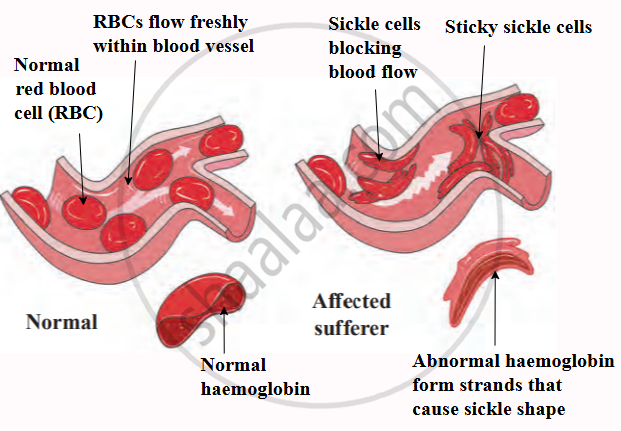Sickle-cell anaemia is a hereditary disorder caused by a mutation in the gene responsible for the production of haemoglobin, the protein in red blood cells (RBCs) that carries oxygen. This mutation alters the structure of haemoglobin and affects the shape and function of RBCs.

Sickle cells
Causes of Sickle-Cell Anaemia:
In normal haemoglobin, the 6th amino acid is glutamic acid. In sickle-cell haemoglobin, this is replaced by valine due to a genetic mutation. This change causes haemoglobin molecules to stick together under low oxygen conditions, resulting in abnormally sickle-shaped RBCs instead of the normal biconcave shape.
Effects on the Body:
- Sickle-shaped RBCs cannot carry oxygen efficiently, leading to oxygen deprivation in tissues and organs.
- Sickle-shaped cells tend to clump together, causing blockages in blood vessels. This leads to damage in vital organs like the brain, lungs, kidneys, and circulatory system.
- Sickle cells break down more quickly than normal RBCs, resulting in anaemia (low RBC count).
- Symptoms include fatigue, weakness, and shortness of breath.
Sickle-cell anaemia is inherited from parents. If both parents are carriers or affected, their offspring have a high likelihood of inheriting the disease. Carriers (individuals with one defective gene and one normal gene) do not typically show symptoms but can pass the gene to their children.



